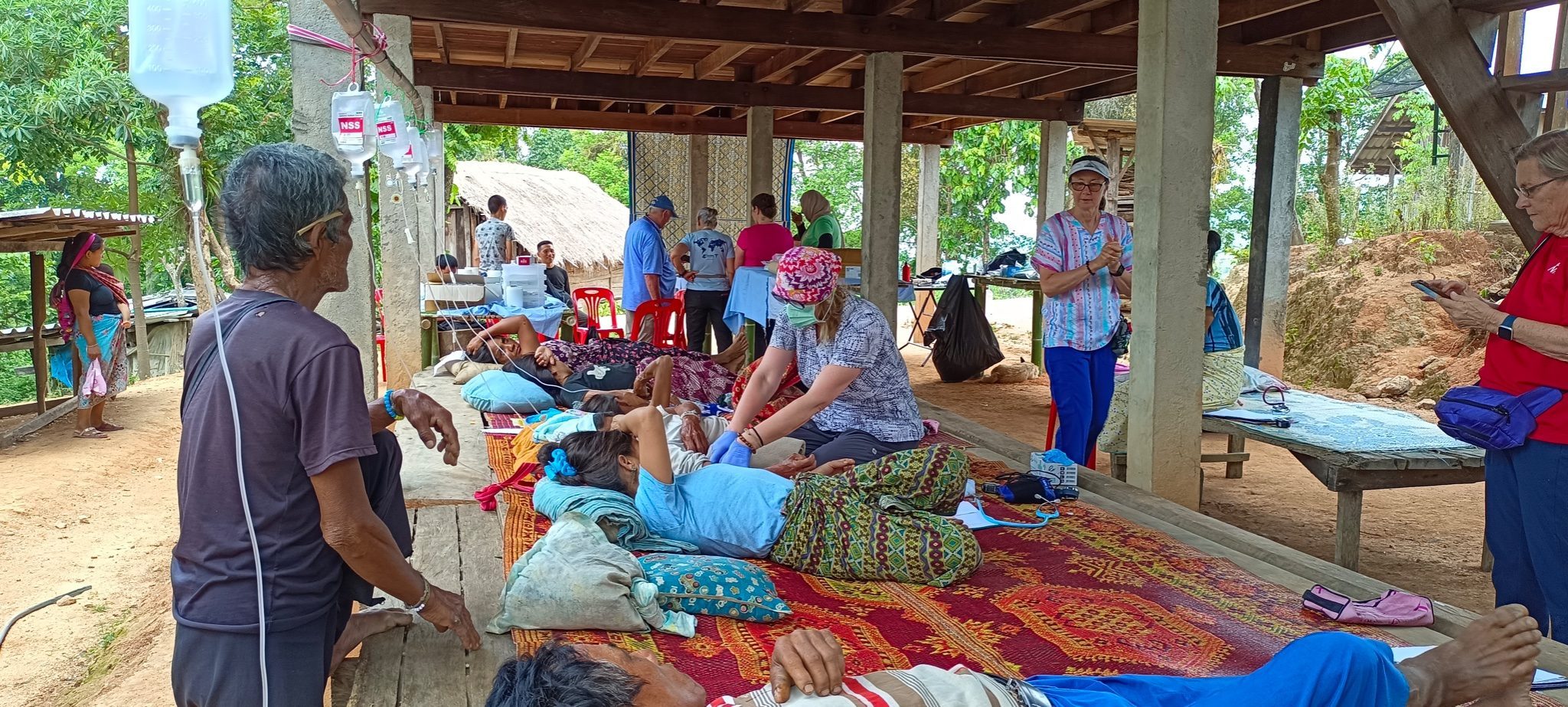18 years ago, in 2003, when I first started this ‘Where There Is No Doctor’ Organisation in the tribes there was no running water in the communities. For shower and drinking water we had to hike up and down the hills to the Springs and waterfalls for kilometers.
Thailand’s isolated hill tribe villages depend on surface and ground-water for livelihood. Some villages are small and isolated, most located over rugged terrain.
The contrast between people who have access to water and sanitation in modern and formal zones in cities and those who suffer from the lack of access to these basic services and have been left behind, including informal settlements and hill tribe communities, was striking.
Contaminated water can transmit diseases such as diarrhoea, cholera, dysentery, typhoid and polio. Health costs associated with waterborne diseases such as malaria, diarrhoea, parasitic and worm infections represent more than one third of the income of poor households.
Poor-quality drinking water is an important risk factor for diarrhoea. Most of the excess disease burden in developing countries falls on young children—17% of all deaths in children under 5 years are attributed to diarrhoea and illustrates how an inadequate water supply is a contributor to deaths in children under 5 years.
The focus on acute diarrhoea, however, almost certainly underestimates the disease burden caused by inadequate water and sanitation. There is a strong link between repeat or chronic diarrhoeal disease, malnutrition, and the poor educational and physical growth that can seriously affect the ability of children to reach their full potential.
The evidence that improving access to safe drinking water reduces the risk of diarrhoeal disease in children is strong.
Access to a safe and continuous supply of water for drinking, cooking, and personal hygiene is an essential prerequisite for health. An inadequate water supply—whether as a result of poor access or quality, low reliability, high cost, or difficulty of management—is associated with significant health risks. A good water supply is necessary for good sanitation and hygiene, and to underpin livelihoods, nutrition, and economic growth.
Lack of water can also lead indirectly to disease via malnutrition.
Finally, improvements in water supply are essential prerequisites for improved personal and home hygiene and to enable sanitation facilities to be kept clean.
Inadequate access to safe drinking water is also associated with several nondiarrhoeal diseases.
Inadequacies in water supply affect health adversely both directly and indirectly. An inadequate water supply also prevents good sanitation and hygiene.
A safe, reliable, affordable, and easily accessible water supply is essential for good health.
To ensure a holistic approach to improving health, our clean water systems are installed alongside a number of toilet’s units.
The most important part of this project is reaching to the unreached, forgotten, shunned, and marginalized hill tribe communities. We will search, find and reach every single left out family to make sure no one is left behind unreached. We will meet the underlying cause that destroy the communities physically as well as mentally.
We will meet the underlying cause by installing sanitation and clean running water supply in the villages. We will build more toilets and water supply systems in the remote villages and unreached hill tribe communities. Installation of water supply and sanitations not only cease illnesses but also help villagers with small scale agriculture, fisheries and backyard vegetable gardening, which directly combat malnutrition and increase source of incomes of the communities.
The result, outcome and success will be monitored by village clinics where we exam patients and do blood and stool tests, scanning for worms and parasites. In villages where proper sanitations and well planned water supplies are done, much less or only a couple of water-borne diseases and illnesses related to low sanitation are seen in our day to day village clinics, and much less worms and parasites are shown in stool tests. The result is very promising and the success is on-going process as most of the villages continue to improve in health and wealth.
The principal purpose of the project to improve water supply and sanitation is to improve health in the hill-tribe communities. On the other hand, the mere provision of water and sanitation infrastructure will not, in itself, improve health. To get the maximum benefit out of an improved water supply and sanitation infrastructure, people need to be supported with information that will enhance these benefits. This form of information is called hygienic education. Hygiene promotion and education provides people with information that they can use to change their behavioral patterns in order to improve their health.
Hygiene promotion and education is not about coercion, but about bringing change in the behavior patterns of people, to make them aware of the diseases related to unhygienic practices, poor water supply and improper sanitation. It forms an integral part of any water and sanitation development program.
- the improvement of the quality of the existing supplies (protection of the sources being the first consideration);
- the improvement of the availability of water to the community (both reliability and accessibility);
- community involvement (acceptability) and commitment;
- the improvement of public health;
- the improvement of the living standards of the community;
- the development of local technical, financial and administrative skills; and
- the improvement of the economic potential of the community (e.g. small-scale agriculture; fisheries and backyard vegetable gardening).
Here we are again bringing long-lasting health care to the communities by installation of water supply.
First, find a spring that is above the village at least 50 meters as we are using gravity. The second most important part is that it is an everlasting spring; does not dry up in summer meaning running all-year round. In the third place , measure the distance in kilometers alongside careful observation on the terrain, getting the most accurate distance information on the up and down landscape, where the pipes would be laid to the designated village.
Normally the distance between the village and the water source, spring, is between 2-7 kilometers.
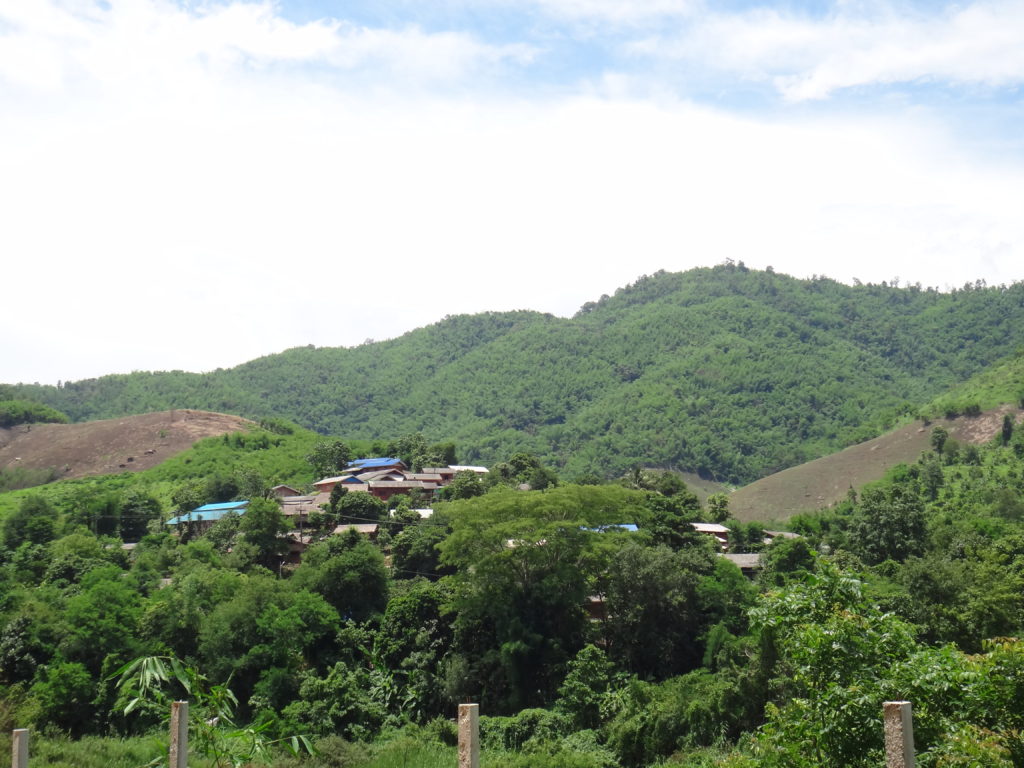
These are the blue PVC pipes we use to bring water from the spring to the villages.
Different sizes are used, starting with 3-4 inches-wide diameter at the water source in the spring and then 2 inches in between, and end up with 1 inch at the water tanks at the village, where the spring water is stored.
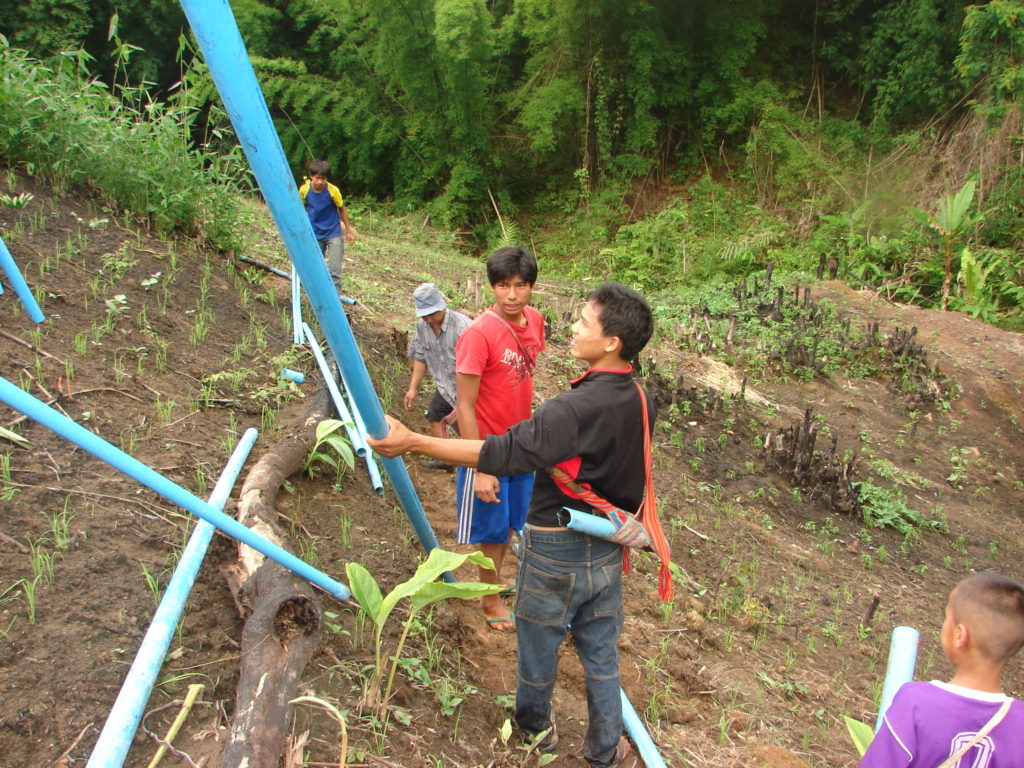
Since each blue pipe is 4 meters long, we need 250 pipes to cover 1 kilometer distance. For 2 kilometers it is 500 blue pipes, and so forth.
Depending on the distance between the targeted village and the water source, spring, the blue pipes are laid.
A long narrow ditch is dug and blue pipes are laid to be buried.
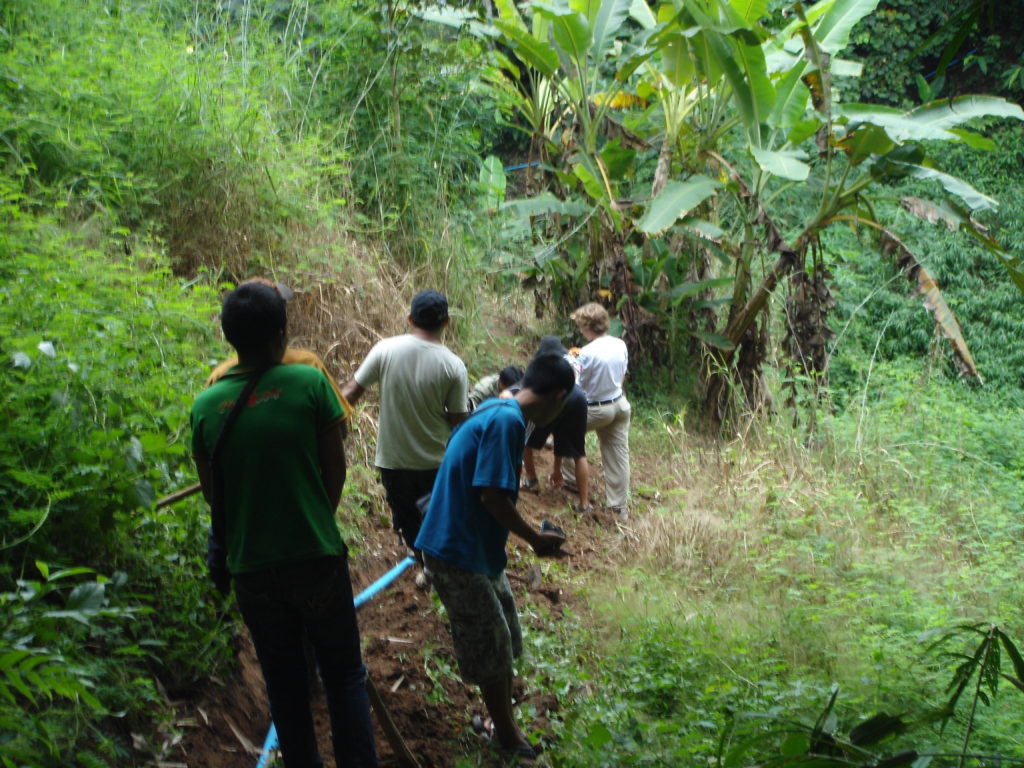
The narrow trench is being dug around, up and down the hills as the blue pipes are being laid and buried.
It is a time consuming and very handy work. Normally it takes about 2-3 weeks depending on the distance between the spring and the targeted village, usually it is around 2-7 kilometers apart. The blue pvc pipes are laid up and down and around the hills.
When the spring water gets to the designated village, it is stored in the water tanks built at the top of the village.
Big enough water tanks are built to store enough spring water to supply every household in the village.
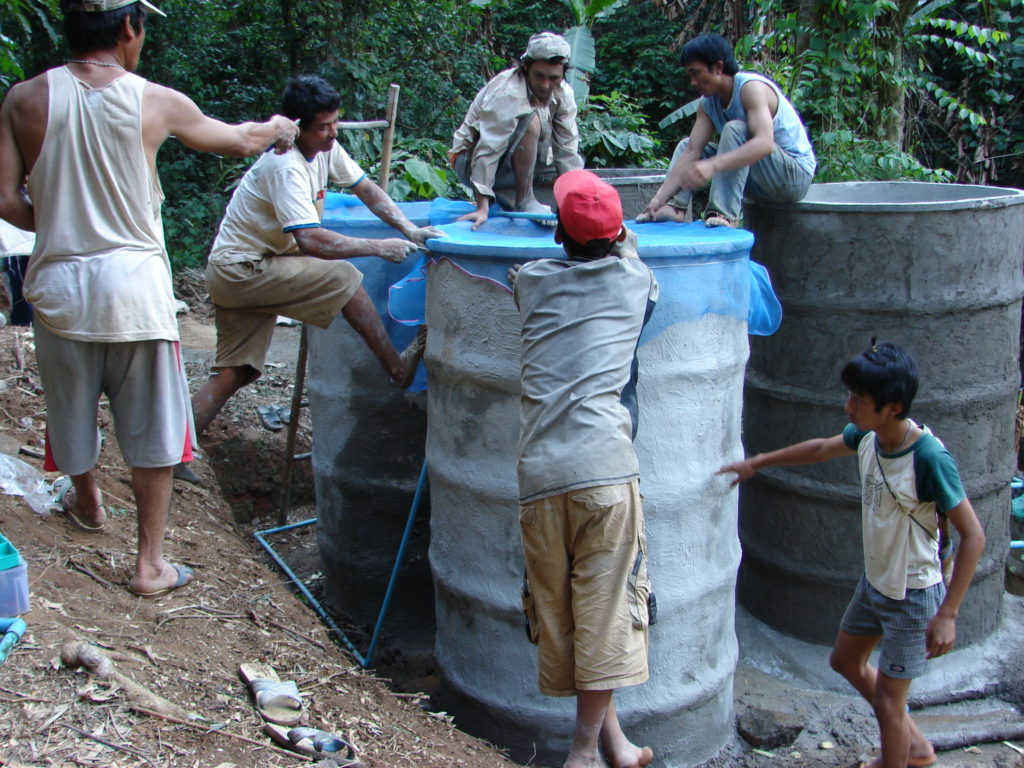
The spring water is then filtered, which is then supply to every household in the village. The spring water is running all day-all night and all year round.
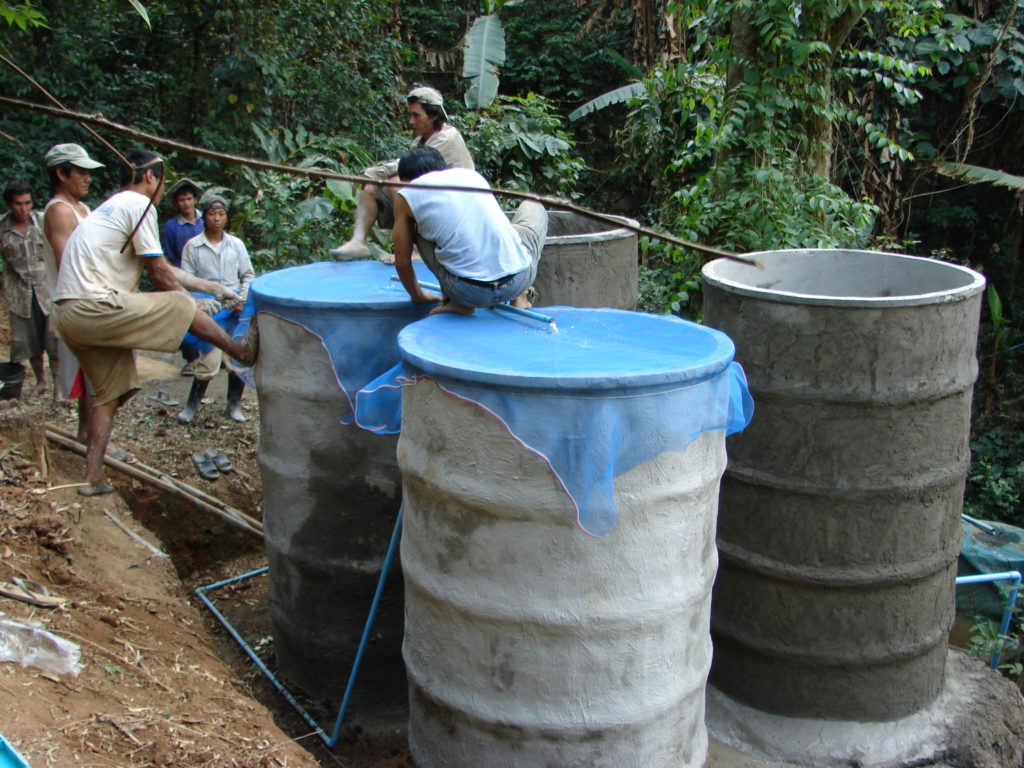
All That Is Not Given Is Lost
